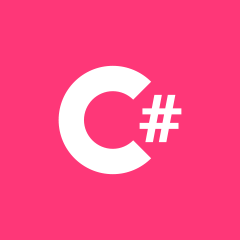将数据从嵌套的 c# 类导出到 csv 文件
我有以下类可以使用,我想将内容导出/展平到 csv 文件。我曾尝试使用 SelectMany,但找不到从公司级别和带有 SalesArea、Node 和 EthernetArea 的底层级别为我的 csv 文件选择字段的方法。有人可以解释我需要做什么来实现这一目标吗?
public class Rootobject
{
public Company[] Companies { get; set; }
}
public class Company
{
public string ORG_NAME { get; set; }
public SalesArea[] Salesareas { get; set; }
public Node[] Nodes { get; set; }
public EthernetArea[] Ethernetareas { get; set; }
}
public class SalesArea
{
public string OBJ_NAME { get; set; }
public string AREA_CTYPE { get; set; }
}
public class Node
{
public string OBJ_NAME { get; set; }
public object BUILDING { get; set; }
}
public class EthernetArea
{
public string OBJ_NAME { get; set; }
public string AREA_CTYPE { get; set; }
public Product[] Products { get; set; }
}
public class Product
{
public string BANDWIDTH_A { get; set; }
public string CONNECTION_TYPE { get; set; }
}
 青春有我
青春有我2回答
-

慕尼黑的夜晚无繁华
我确定应该有另一种方法来做到这一点,但无论如何,这就是我所做的......如果我理解正确,您想要“非规范化”数据并将集合导出到 CSV。我用了很多Select SelectMany和Joinvar root = new Rootobject { Companies = new Company[] { new Company { ORG_NAME = "Co", Salesareas = new SalesArea[]{ new SalesArea { OBJ_NAME = "Sa", AREA_CTYPE = "SaAr", } }, Nodes = new Node[] { new Node { OBJ_NAME = "No", BUILDING = "NoBu" } }, Ethernetareas = new EthernetArea[] { new EthernetArea { OBJ_NAME = "Et", AREA_CTYPE = "EtAr", Products = new Product[] { new Product { BANDWIDTH_A = "ProA", CONNECTION_TYPE = "ProCon" } } } } }, new Company { ORG_NAME = "Co2", Salesareas = new SalesArea[]{ new SalesArea { OBJ_NAME = "Sa2", AREA_CTYPE = "SaAr2", } }, Nodes = new Node[] { new Node { OBJ_NAME = "No2", BUILDING = "NoBu2" } }, Ethernetareas = new EthernetArea[] { new EthernetArea { OBJ_NAME = "Et2", AREA_CTYPE = "EtAr2", Products = new Product[] { new Product { BANDWIDTH_A = "ProA2", CONNECTION_TYPE = "ProCon2" }, new Product { BANDWIDTH_A = "ProA3", CONNECTION_TYPE = "ProCon3" } } } } } } }; var sas = root.Companies.SelectMany(x => x.Salesareas.Select(y => new { Company = x.ORG_NAME, SalesName = y.OBJ_NAME, SalesAreaType = y.AREA_CTYPE })); var nodes = root.Companies.SelectMany(x => x.Nodes.Select(y => new { Company = x.ORG_NAME, NodesName = y.OBJ_NAME, NodeBuilding = y.BUILDING })); var ethes = root.Companies.SelectMany(x => x.Ethernetareas.SelectMany(y => y.Products .Select(z => new { Company = x.ORG_NAME, EthernetName = y.OBJ_NAME, EthernetArea = y.AREA_CTYPE, BandwithA = z.BANDWIDTH_A, ConnnectionType = z.CONNECTION_TYPE }))); sas.Join(nodes, x => x.Company, y => y.Company, (x, y) => new {x.Company, x.SalesName, x.SalesAreaType, y.NodesName, y.NodeBuilding}) .Join(ethes, x => x.Company, y => y.Company, (x, y) => new {x.Company, x.SalesName, x.SalesAreaType, x.NodesName, x.NodeBuilding, y.EthernetName, y.EthernetArea, y.BandwithA, y.ConnnectionType}) .Dump();Dump()是一个LinqPad扩展方法这是结果...... -

慕标5832272
定义一个类,该类将在 CSV 中表示您想要的内容。由于多个对象属性在您的模型中具有相同的名称。在您的评论中,您选择使用类名作为属性的前缀,因此您应该具有以下内容:public class CompanyCSV{ public string Company_ORG_NAME { get; set; } public string SalesArea_OBJ_NAME { get; set; } public string SalesArea_AREA_CTYPE { get; set; } public string Node_OBJ_NAME { get; set; } public string Node_BUILDING { get; set; } public string EthernetArea_OBJ_NAME { get; set; } public string EthernetArea_AREA_CTYPE { get; set; } public string Product_BANDWIDTH_A { get; set; } public string Product_CONNECTION_TYPE { get; set; }}然后简单地:var result = from c in dataInput.Companies from s in c.Salesareas from n in c.Nodes from e in c.Ethernetareas from p in e.Products select new CompanyCSV { Company_ORG_NAME = c.ORG_NAME, SalesArea_OBJ_NAME = s.OBJ_NAME, SalesArea_AREA_CTYPE = s.AREA_CTYPE, Node_OBJ_NAME = n.OBJ_NAME, Node_BUILDING = n.BUILDING.ToString(), EthernetArea_OBJ_NAME = e.OBJ_NAME, EthernetArea_AREA_CTYPE = e.AREA_CTYPE, Product_BANDWIDTH_A = p.BANDWIDTH_A, Product_CONNECTION_TYPE = p.CONNECTION_TYPE };foreach (var line in result){ // Don't use this to generate your csv this is simply to show the result Console.WriteLine($"{line.c},{line.s},{line.n},{line.e},{line.p}, ..etc ..");}要编写您的 CSV,您可以使用CsvHelper。这将帮助您使用逗号或引号处理值。不要手动生成 CSV。如果您的集合(节点 []、公司 [] 等)可以为空,您应该在 getter 中使用空合并运算符来保护这种边缘情况,例如:private Node[] nodes;public Node[] Nodes { get { return nodes ?? (nodes = new Node[] { }); } set { nodes = value; }}
 随时随地看视频慕课网APP
随时随地看视频慕课网APP
相关分类


 C#
C#